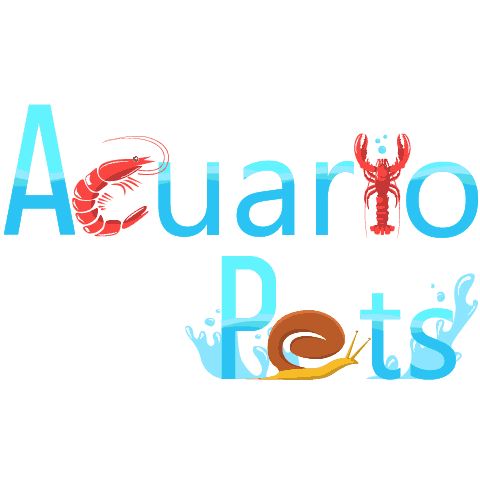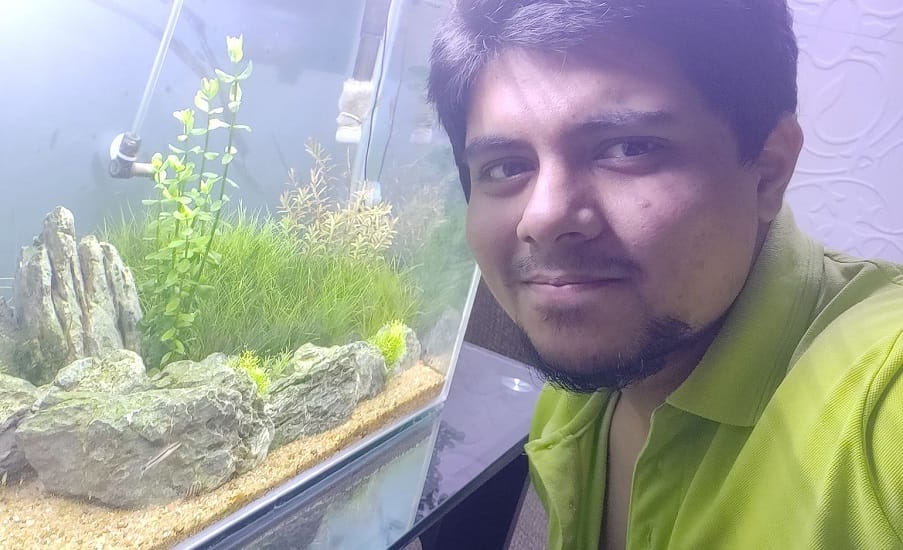This post was created with help from AI tools and carefully reviewed by a human (Muntaseer Rahman) . For more on how we use AI on this site, check out our Editorial Policy.
Check Out These FREE Tools We Made JUST For You!
How to Build a Bioactive Bearded Dragon Vivarium That Practically Cleans Itself

Tired of spending hours cleaning your bearded dragon’s vivarium?
What if you could create a natural habitat that practically maintained itself? A bioactive vivarium does just that.
With a little effort upfront, you can design an environment that mimics nature, where beneficial insects and plants work together to keep your dragon’s space fresh and healthy.
Here’s the step by step guide!
CRITICAL: Bioactive Setups Are Advanced—Get Basics Right First
Bioactive vivariums are incredible, but they’re NOT for beginners. Before you attempt this complex setup, you must have mastered standard bearded dragon care.
Prerequisites (Non-Negotiable):
You should have at least 1-2 years of successful bearded dragon keeping experience before attempting bioactive. Here’s what you need to master first:
Standard Care Basics:
- Proper enclosure sizing (120 gallons minimum for adults)
- T5 HO UVB lighting (replaced on schedule)
- Temperature control (maintaining proper gradients)
- Temperature monitoring (daily verification)
- Proper diet with supplements
- Safe substrate (tile or similar)
Why experience matters:
- Bioactive setups require daily monitoring and adjustments
- You need to recognize signs of illness immediately
- Temperature and humidity management is complex
- Problems cascade quickly—one mistake affects the entire ecosystem
- You must understand normal dragon behavior to spot issues
If you’re a new owner: Start with a standard setup using tile substrate and master the basics first. Bioactive can wait.
If you’ve been keeping dragons successfully for 1-2+ years: You’re ready to consider bioactive as an upgrade.
Get Standard Setup Guide First
Why Bioactive Isn’t Always Better
Before you commit to this project, understand the trade-offs:
Bioactive Advantages:
- Less frequent deep cleaning
- Natural appearance
- Educational and interesting
- Plants help regulate humidity
Bioactive Disadvantages:
- Expensive upfront ($300-600+ just for bioactive components)
- Complex to maintain
- Harder to spot health issues (poop gets buried)
- Temperature monitoring is trickier
- Risk of impaction from loose substrate
- Not suitable for babies or juveniles
Tile substrate is still safer and easier for most keepers. See substrate safety guide
Reality check: Most successful keepers use tile, not bioactive. Bioactive is a preference, not a requirement.
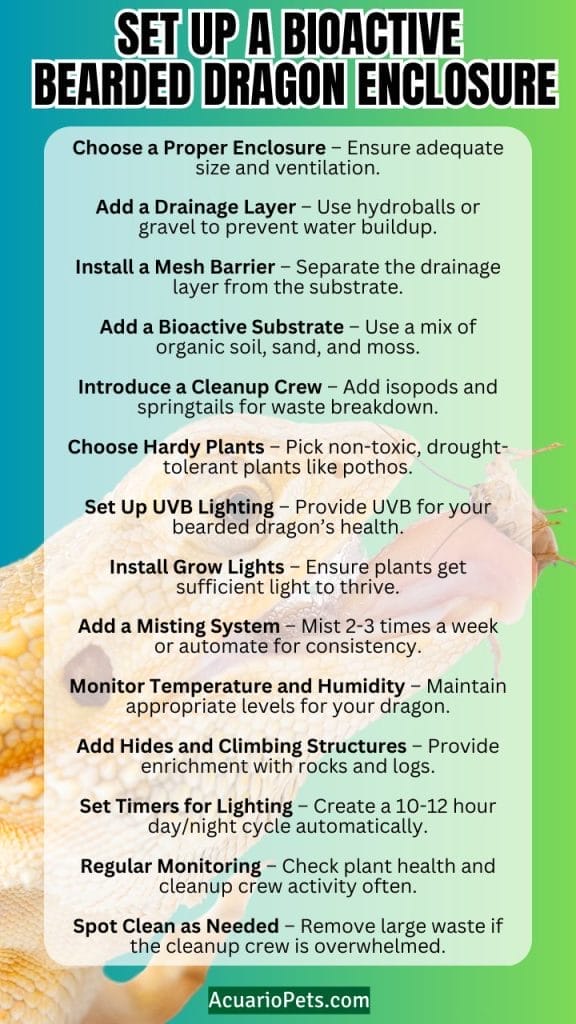

Your Beardie Has More to Say…
This article tells you WHAT to do, but do you know WHY your dragon needs it? Or what they’re thinking when you do it wrong?
Read the full rant (all 20 chapters of it) in: “What Your Bearded Dragon Wishes You Knew”
*Told by a very frustrated beardie who’s had ENOUGH of watching you guess.*
Step 1: Setting Up the Layers for a Balanced Vivarium
The foundation of any good bioactive vivarium lies in the layers you build. Think of it as constructing the framework of a tiny, self-sustaining ecosystem. Each layer serves a specific purpose, and when done correctly, they all work together to create a balanced environment.
1.1. Substrate Layer
The substrate is where your plants will grow and your cleanup crew will live. It needs to hold moisture, allow airflow, and promote plant health. One of the best options for a bearded dragon’s bioactive vivarium is the ABG (Atlanta Botanical Garden) mix.
This mix includes soil, bark, moss, and other organic materials, which not only supports plant life but also helps regulate humidity.


You can also create a homemade mix, but make sure it contains:
- Organic soil (without fertilizers or pesticides)
- Coconut coir or peat moss for moisture retention
- Sand for proper drainage and airflow
- Leaf litter or sphagnum moss to add extra organic material and provide places for your cleanup crew to hide.
CRITICAL SAFETY WARNING:
Bioactive loose substrates pose impaction risk, especially for:
- Babies under 12 months (NEVER use loose substrate)
- Juveniles under 18 months (high risk)
- Dragons that tongue-test everything
- Sick or stressed dragons
Impaction symptoms:
- Loss of appetite
- No bowel movements
- Lethargy
- Swollen belly
If you see these signs, remove the dragon immediately and see a reptile vet.
Safer alternative: Tile substrate in a standard setup eliminates impaction risk entirely while being easier to maintain.
If you proceed with bioactive: Only use with healthy adult dragons (18+ months) and monitor closely for impaction signs.
1.2. Drainage Layer
Below the substrate, you’ll need a drainage layer to prevent the soil from getting waterlogged. A waterlogged substrate can lead to root rot and unhealthy plants, not to mention a swampy mess for your dragon. The drainage layer is usually made of hydroballs or gravel.

Here’s a simple breakdown:
| Material | Purpose |
|---|---|
| Hydroballs or Gravel | Collects excess water and prevents root rot |
| Mesh barrier | Separates the substrate from the drainage layer |
Don’t forget to place a mesh barrier between the substrate and the drainage layer. This prevents the soil from clogging the drainage, which can cause standing water and foul smells.

Step 2: Introducing the Cleanup Crew
One of the coolest parts of a bioactive vivarium is the cleanup crew—small invertebrates like isopods and springtails that handle waste management for you. Once they’re in place, they’ll break down your bearded dragon’s poop, shed skin, and decaying plant matter. It’s like having a cleaning team that works around the clock!

2.1. Isopods
Isopods, often called “pill bugs,” are small crustaceans that thrive in moist environments. They help break down organic waste and recycle it into nutrients for the plants. There are different types of isopods, but for a bearded dragon vivarium, I recommend using dwarf white isopods or giant canyon isopods because they’re hardy and easy to manage.
2.2. Springtails
Springtails are even smaller than isopods and are fantastic at consuming mold and decaying organic matter. These tiny guys will live in the top layers of your substrate, helping keep the ecosystem in balance. They love moist environments and will multiply quickly if conditions are right.
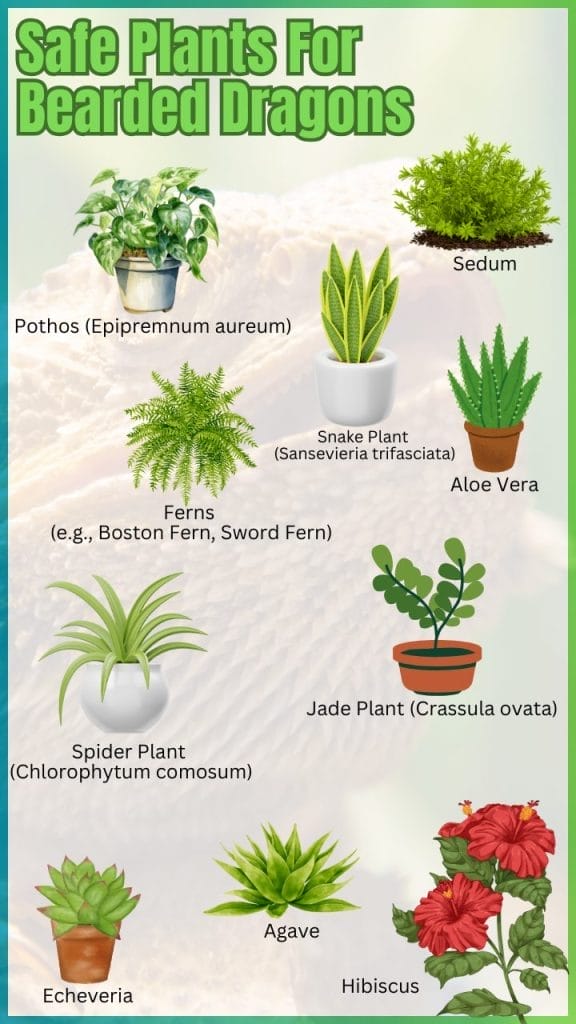
Step 3: Choosing the Right Plants
Not all plants will survive in the warm, dry environment of a bearded dragon’s vivarium. However, by selecting the right species, you can create a lush, attractive space that also contributes to the ecosystem’s balance. The key is choosing plants that are non-toxic, hardy, and capable of thriving in both dry and humid conditions.


3.1. Ideal Plants for a Bearded Dragon Vivarium:
- Pothos: This plant is nearly indestructible and grows quickly. It tolerates low light and dry conditions, making it a great choice.
- Ferns: These can add beautiful greenery to your vivarium. Just make sure they get enough moisture.
- Aloe Vera or Succulents: These plants thrive in dry, sunny environments and provide additional visual interest.
| Plant Type | Features |
|---|---|
| Pothos | Tolerates low light, fast-growing |
| Ferns | Good for moist spots, adds greenery |
| Aloe Vera | Hardy, drought-tolerant, non-toxic |
| Succulents | Thrive in dry, arid conditions |
The plants help in regulating humidity, providing hiding spots for your dragon, and adding a touch of nature to your setup.

Step 4: Lighting and Heating (Most Critical Component)
Your lighting and heating setup is THE MOST IMPORTANT part of any bearded dragon setup—bioactive or not. Get this wrong and your dragon dies, regardless of how pretty the vivarium looks.
4.1. UVB Lighting (Non-Negotiable)
Requirements:
- T5 HO tube bulb only (10.0 or 12%)
- NOT compact/coil bulbs (inadequate UVB output)
- Mounted INSIDE the vivarium (screen blocks 50% of UVB)
- Positioned 10-12 inches from basking spot
- 12-14 hours daily on timer
- Replaced every 6-12 months (even if still lights up—UVB output degrades)
Why this matters: Without proper UVB, your dragon cannot metabolize calcium from food. Result: metabolic bone disease (MBD), which is fatal.
Bioactive complication: Plants can block UVB if not positioned carefully. You must ensure your dragon has direct UVB access on basking spots.
See complete UVB lighting guide


4.2. Basking Heat
Requirements:
- Basking spot: 95-110°F (varies by age)
- Warm side ambient: 85-90°F
- Cool side ambient: 75-80°F
Use a temperature gun to verify temps daily—guessing kills dragons.
Bioactive complication: Loose substrate doesn’t hold heat like tile does. You may need stronger basking bulbs or additional heat sources.
4.3. Grow Lights for Plants
Plants need light too, but dragon health comes first. Your UVB and basking setup takes priority—plants adapt around it.
Light hierarchy:
- UVB for dragon health (non-negotiable)
- Basking heat for dragon (non-negotiable)
- Grow lights for plants (nice to have)
Important: Never compromise dragon lighting for plant lighting.
4.4. Temperature Monitoring in Bioactive Setups
Bioactive vivariums are harder to monitor because:
- Substrate insulates temperature readings
- Plants create microclimates
- Humidity affects temperature readings
Required equipment:
- Infrared temperature gun (for surface temps)
- Digital thermometer with probe (for ambient temps)
- Hygrometer (for humidity)
Check temperatures multiple times daily when first setting up. Once stable, daily checks are minimum.
See temperature monitoring equipment

Step 5: Automating the Maintenance
Now that the vivarium is set up, you can make your life even easier by automating certain aspects. With a few tools, you can cut down on maintenance time significantly.
5.1. Temperature and Humidity Control
A great way to automate the environment is by using a Raspberry Pi or other smart controllers. These devices can monitor temperature and humidity levels and adjust heaters, fans, or humidifiers as needed.


5.2. Misting System
An automated misting system can be set up to spray the plants at scheduled intervals, maintaining consistent humidity. This is particularly helpful for the plants and the cleanup crew, both of which rely on moisture to stay healthy.
5.3. Lighting Schedule
Put your lights on timers to mimic a natural day/night cycle. This will keep your bearded dragon’s circadian rhythm in check and ensure the plants get the proper light exposure.
| Automation Tool | Function |
|---|---|
| Raspberry Pi | Controls temperature and humidity automatically |
| Automated Misting | Maintains humidity levels for plants and cleanup crew |
| Timers for Lights | Mimics natural daylight cycle for dragon and plants |
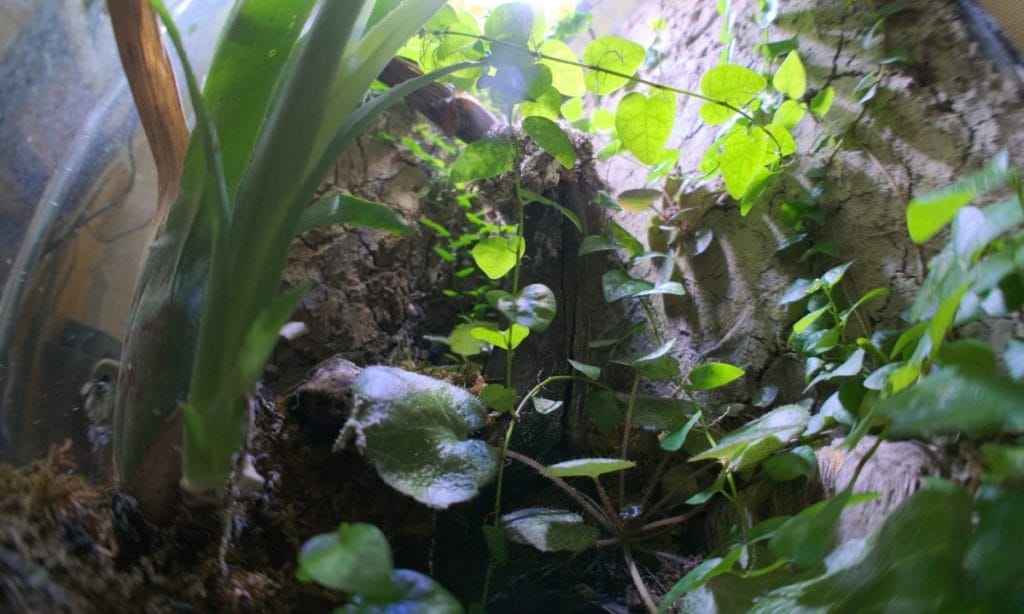
Step 6: Regular Monitoring and Feeding Habits
Even with a bioactive vivarium, you’ll still need to check in occasionally to ensure everything is running smoothly. Observe your plants and cleanup crew to make sure they’re thriving. Sometimes, the balance can be thrown off if too much waste accumulates or if plants start to die.
6.1. Feeding
Be careful with how much you feed your bearded dragon. Overfeeding can result in too much waste, which can overwhelm your cleanup crew and upset the system’s balance. Feed the right portions, and spot-clean any excess if needed.
6.2. Monitor Plant and Animal Health
Regularly check the health of your plants. If they start wilting or dying, it could mean your vivarium’s humidity is off. Likewise, ensure the isopods and springtails are active and doing their job. If they disappear, you may need to reintroduce them.
Feeding Considerations in Bioactive Setups
Bioactive vivariums change how you feed your dragon:
Insect Feeding Challenges
Problem: Live insects can burrow into substrate and escape, potentially:
- Eating your cleanup crew (isopods/springtails)
- Dying and rotting in substrate
- Never being consumed
Solution: Use feeding dishes or tongs to control insect feeding. Don’t just release insects into the vivarium.
Vegetation Feeding
Your dragon still needs proper vegetables daily:
- Collard greens
- Mustard greens
- Turnip greens
- Dandelion greens
Don’t rely on vivarium plants for nutrition. The plants are for decoration and ecosystem balance, not dragon food.
Supplements Still Required
Bioactive doesn’t eliminate supplement needs:
- Calcium powder (without D3): Daily for babies, 4-5x weekly for adults
- Calcium with D3: 2-3x per week
- Multivitamin: Once per week
Critical: Even in a “natural” bioactive setup, captive dragons need calcium supplementation. Without it, they develop metabolic bone disease.
Common Bioactive Setup Failures (And How to Avoid Them)
Most bioactive attempts fail. Here’s why:
Failure #1: Wrong Enclosure Size
Problem: Bioactive needs space for substrate depth, plants, AND dragon movement. Most people try it in tanks that are too small.
Solution: Minimum 120 gallons for adult dragons. Smaller tanks can’t support bioactive properly.
Failure #2: Inadequate UVB
Problem: Plants block UVB, or keepers prioritize plant lighting over UVB.
Solution: Dragon health comes first. Ensure direct UVB access to basking spots.
Failure #3: Wrong Humidity Levels
Problem: Bearded dragons need LOW humidity (30-40%). Bioactive setups tend to be more humid.
Solution: Monitor constantly with hygrometer. If humidity exceeds 50%, you need better ventilation or less misting.
High humidity causes: Respiratory infections, skin infections, lethargy
Failure #4: Impaction from Substrate Ingestion
Problem: Dragons eat substrate accidentally while hunting or deliberately from curiosity.
Solution: Only use bioactive with adult dragons (18+ months). Monitor for impaction signs. Remove immediately if symptoms appear.
Safer alternative: Tile substrate eliminates this risk entirely.
Failure #5: Temperature Gradient Loss
Problem: Substrate and plants interfere with proper temperature gradients.
Solution: Verify temps daily with temperature gun. Adjust as needed.
Failure #6: Trying Bioactive Too Soon
Problem: New keepers attempt bioactive before mastering basics.
Solution: Get 1-2 years of successful standard care first. Master the basics before going advanced.
What are the best plants to use in a bioactive bearded dragon vivarium?
Important: These plants are for decoration and ecosystem function—NOT dragon nutrition. Your dragon still needs proper daily vegetables.
See complete feeding requirements
Plant safety: While these plants are non-toxic, never rely on vivarium plants for nutrition. Feed proper greens separately.
When setting up a bioactive vivarium for your bearded dragon, choosing the right plants is key. Since bearded dragons thrive in dry, warm environments, you’ll need plants that can handle those conditions while also being safe for your pet.
Here are some of the best plants to use:
1. Pothos (Epipremnum aureum)
Why it’s great: Pothos is incredibly hardy and can tolerate a wide range of lighting and moisture levels. It’s low-maintenance and grows quickly, providing coverage and humidity control.
Bonus: It’s non-toxic to reptiles and adds a lush, green aesthetic to the vivarium.
2. Aloe Vera
Why it’s great: Aloe is drought-tolerant and thrives in dry environments, making it perfect for a bearded dragon’s vivarium. It’s also easy to care for and doesn’t need a lot of water.
Bonus: Aloe is non-toxic, and its gel can soothe your dragon’s skin if it ever comes into contact with it.
3. Ferns (e.g., Boston Fern, Sword Fern)
Why they’re great: Ferns add a pop of green and help regulate humidity. While they prefer slightly more moisture, they can survive in the humid microclimates you create with automated misting.
Bonus: They’re excellent at absorbing humidity and thrive in the shaded parts of your vivarium.
4. Jade Plant (Crassula ovata)
Why it’s great: Jade plants are a type of succulent, which means they’re tough, can store water, and thrive in warm, dry environments. They also have a sturdy structure that won’t be easily damaged by a wandering dragon.
Bonus: It’s non-toxic and very easy to care for.
5. Snake Plant (Sansevieria trifasciata)
Why it’s great: This is another hardy, drought-tolerant plant that can handle a wide range of temperatures and low water levels. Its upright, stiff leaves make it a great structural addition to the vivarium.
Bonus: It’s low-maintenance and safe for reptiles.
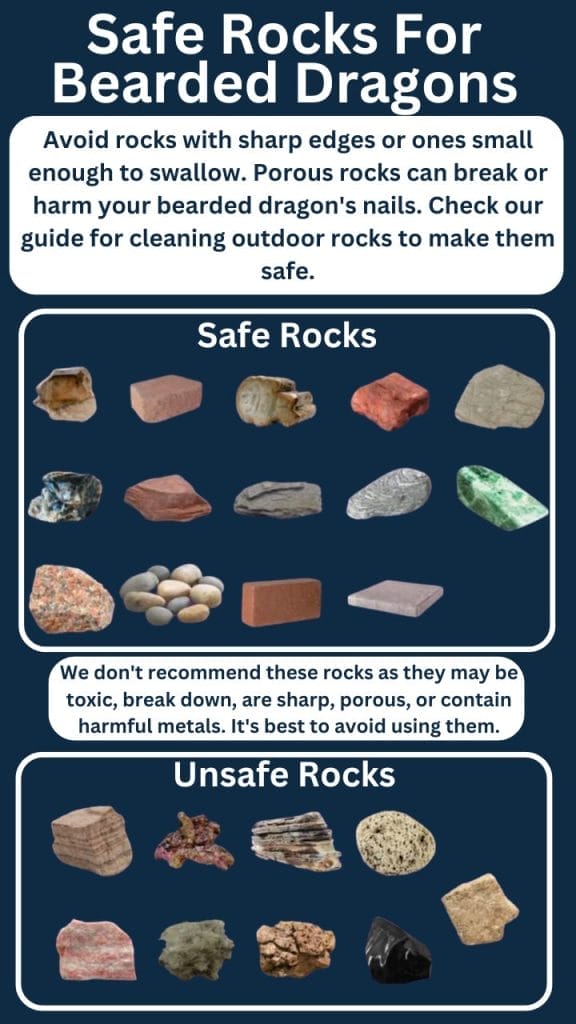
6. Hibiscus
Why it’s great: Hibiscus plants can handle high temperatures and provide beautiful, colorful flowers. These plants need bright light and will thrive under the same lighting setup you use for your dragon.
Bonus: It’s safe for your bearded dragon to nibble on!
7. Spider Plant (Chlorophytum comosum)
Why it’s great: Spider plants are highly adaptable and can tolerate a variety of conditions, including lower humidity. They also help purify the air in the vivarium.
Bonus: This non-toxic plant has long, arching leaves that provide visual interest and shelter for your bearded dragon.
8. Agave
Why it’s great: Agave plants love the heat and require very little water, which makes them a perfect fit for a bearded dragon vivarium. They also bring a desert-like aesthetic.
Bonus: Agave is non-toxic, but be careful with its spiky leaves, especially if your dragon might bump into them.
9. Sedum
Why it’s great: Sedums are a type of succulent that’s very tolerant of dry, sunny environments. They add some texture and greenery while being tough enough to handle trampling by your dragon.
Bonus: Sedum is easy to propagate and non-toxic.
10. Echeveria
Why it’s great: Echeveria is a beautiful succulent with thick, fleshy leaves that store water. These plants can thrive in dry conditions, making them a good choice for a bearded dragon’s environment.
Bonus: Non-toxic and easy to care for, they bring a lovely pop of color to the setup.
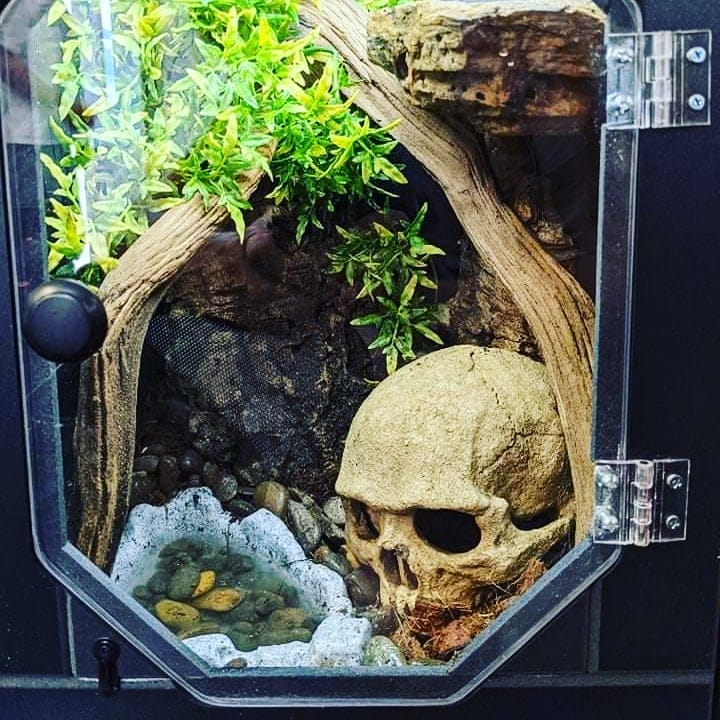
How do I maintain the right humidity levels in a bioactive vivarium?
- Choose the Right Substrate: Use a mix like ABG (Atlanta Botanical Garden) or soil that retains moisture without becoming soggy.
- Add a Drainage Layer: Include hydroballs or gravel beneath the substrate to prevent water buildup and allow proper drainage.
- Use Live Plants: Plants like ferns and pothos naturally help regulate humidity by releasing moisture into the air.
- Automated Misting System: Set up an automated misting system to keep humidity stable. You can program it to mist at certain intervals.
- Monitor Regularly: Use a hygrometer to check humidity levels frequently and adjust the misting or airflow if needed.
- Provide Water Dishes: A shallow water dish can help add moisture to the air, especially in drier environments.
- Adjust Ventilation: Ensure proper airflow with ventilation, but close it slightly if humidity drops too low.
Can I use a bioactive setup for a bearded dragon without a light source?
No, a bioactive setup for a bearded dragon cannot function without a light source. Bearded dragons need UVB light for health, and most plants in a bioactive setup also require light to grow and thrive. Without proper lighting, both your dragon and the plants will suffer.
What types of cleanup crew animals are best for a bioactive vivarium?
- Isopods (e.g., Dwarf White, Powder Orange): They break down waste, uneaten food, and decaying plant matter, keeping the substrate healthy.
- Springtails: Tiny insects that feed on mold, fungi, and decaying organic matter, preventing harmful mold buildup.
- Mealworms: These are great for breaking down organic waste and leftover food, though they can be less active than isopods.
- Earthworms: Help aerate the soil and break down organic matter, enriching the substrate with nutrients.
- Superworms: Larger than mealworms, they help break down larger pieces of waste but can be more destructive to plants if not monitored.
These animals work together to maintain cleanliness, enrich the soil, and keep your bioactive vivarium running smoothly.
How often should I mist a bioactive vivarium to keep it clean?
In a bioactive vivarium for a bearded dragon, misting is typically needed 2-3 times a week. This helps maintain humidity for the plants and cleanup crew but shouldn’t make the enclosure too damp.
If you have an automated misting system, set it to mist lightly at intervals that keep the substrate moist but not soaked. Always adjust based on the specific humidity needs of your setup.
Should You Build a Bioactive Vivarium?
Bioactive vivariums are beautiful and interesting, but they’re NOT for everyone. Here’s how to decide:
You’re Ready for Bioactive If:
✓ You have 1-2+ years of successful dragon keeping
✓ You’ve mastered standard care
✓ Your dragon is 18+ months old (adults only)
✓ You have a 120-gallon+ enclosure
✓ You can monitor temperatures and humidity daily
✓ You have $500-800 budget for bioactive components
✓ You understand impaction risks and signs
Stick with Standard Setup If:
✗ You’re a new keeper (under 1 year experience)
✗ Your dragon is under 18 months old
✗ You have a smaller tank
✗ You want easier maintenance
✗ You’re on a tight budget
✗ You value safety over aesthetics
Reality check: Most experienced keepers use tile substrate in standard setups. It’s safer, easier, and just as healthy for dragons.
Standard Setup Advantages:
- Zero impaction risk with tile
- Easier temperature control
- Better visibility of poop (health monitoring)
- Lower cost
- Simpler maintenance
- Safer for all age dragons
Complete Standard Setup Checklist:
- [ ] 120-gallon enclosure
- [ ] T5 HO UVB bulb
- [ ] Basking bulb
- [ ] Temperature gun
- [ ] Tile substrate
- [ ] Quality diet
- [ ] Supplements
- [ ] Safe decor
Get Complete Standard Setup Guide
The Priority Order:
For new keepers:
- Master standard care (1-2 years)
- Keep your dragon healthy and thriving
- THEN consider bioactive as an upgrade
For experienced keepers:
- Ensure your current setup is perfect
- Research bioactive extensively
- Plan carefully and budget appropriately
- Build slowly and monitor constantly
Final Thoughts:
Bioactive vivariums are impressive, but they’re advanced projects that add complexity and risk. Standard setups with tile substrate are safer, easier, and proven to keep dragons healthy for 10-15+ years.
If you choose bioactive:
- Accept increased risk of impaction
- Commit to daily monitoring
- Keep vet contact info handy
- Be prepared to convert back to tile if problems arise
If you choose standard setup:
- You’re making the safe, smart choice
- Your dragon will thrive just as well
- Maintenance is easier
- Costs are lower
Either way, master the essentials first.
Now make your decision—but make it informed.
About Author
Hello, I’m Muntaseer Rahman, the owner of AcuarioPets.com. I’m passionate about aquarium pets like shrimps, snails, crabs, and crayfish. I’ve created this website to share my expertise and help you provide better care for these amazing pets.
Disclaimer
This site is owned and operated by Muntaseer Rahman. AcuarioPets.com is a participant in the Amazon Services LLC Associates Program, an affiliate advertising program designed to provide a means for sites to earn advertising fees by advertising and linking to Amazon.com. This site also participates in other affiliate programs and is compensated for referring traffic and business to these companies.
